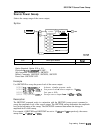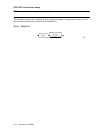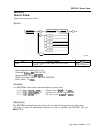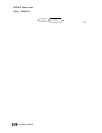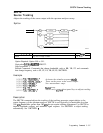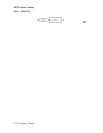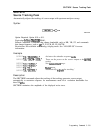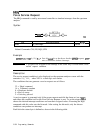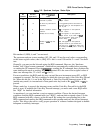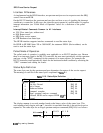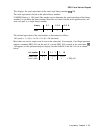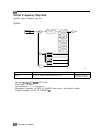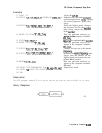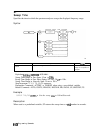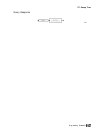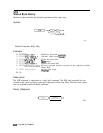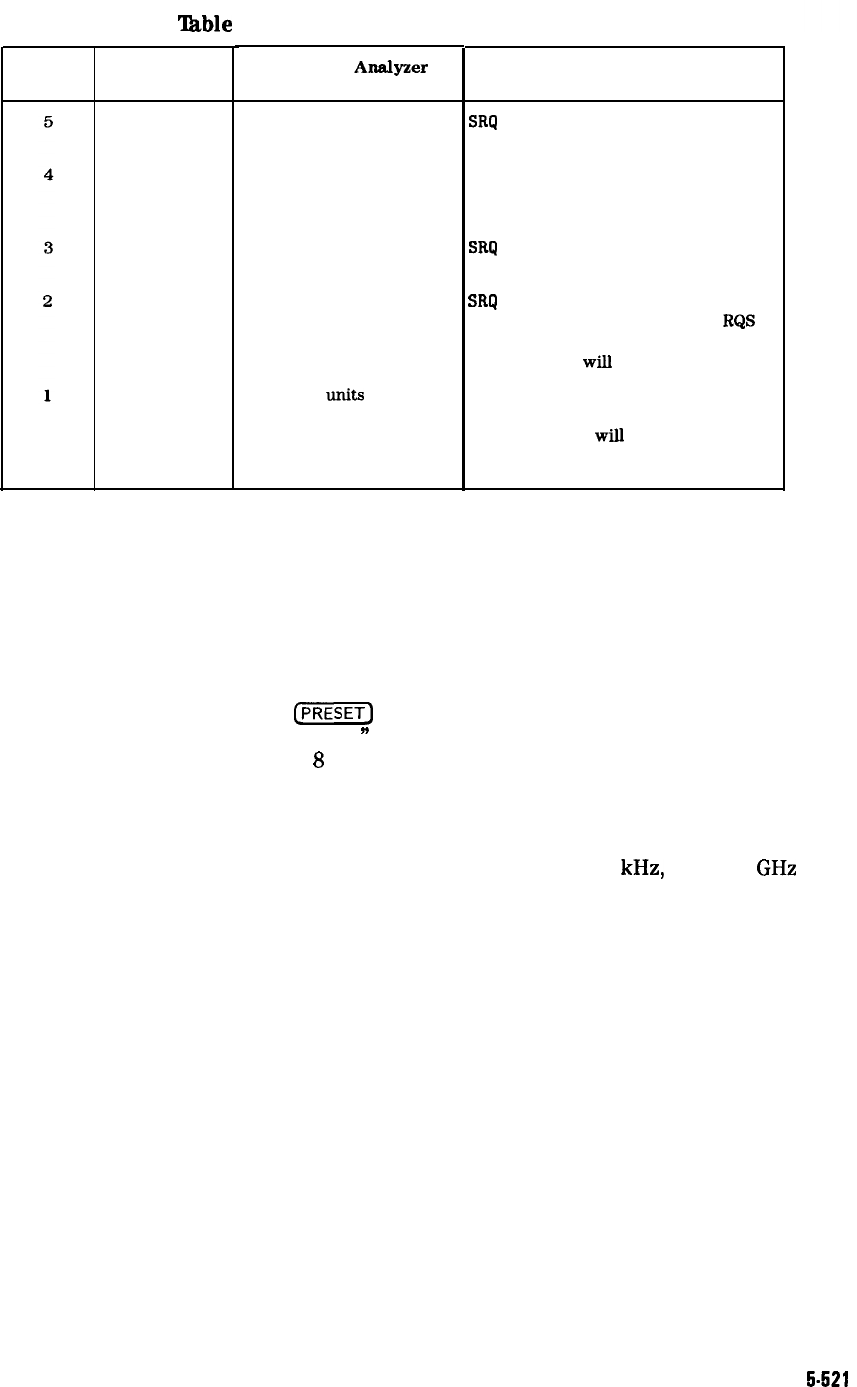
SRQ Force Service Request
‘Ihble
5-9. Spectrum Analyzer Status Byte
Bit
Number
Decimal
Equivalent
32
16
8
4
2
Spectrum
Analyzer
State
Set when an illegal
command is present.
Set when any command is
completed.
Indicates hardware broken
condition.
Indicates end of sweep.
Indicates a
units
key was
pressed.
Description
SRQ
140 appears on the spectrum
analyzer screen.
It is triggered by EOI at the end of a
command string or the completion of a
print or plot.
SRQ
110 appears on the spectrum
analyzer screen.
SRQ
104 appears on the spectrum
analyzer screen. If you send any
R&S
value that contains mask value 4,
another sweep
will
be taken.
SRQ 102 appears on the spectrum
analyzer screen. If you activate the
units key bit, it
will
remain active until
you activate “EE” and press a units key.
(See “EE.“)
Bit numbers 0 (LSB), 6, and 7 are not used.
The spectrum analyzer screen numbers 102, 104, and 110 are the octal values corresponding
to the status register values; that is, SRQ 102 = bit 6 = octal 100 and bit 2 = octal 2 are both
true.
Generally, you must set the bit mask using the RQS command. However, the “hardware
broken” and “illegal remote command” conditions are automatically enabled after presetting
or sending the IP command. Pressing
C-1
or sending the IP command, then, produces the
same interrupt bit mask as sending “RQS 40;
n
(decimal 40 is the sum of the assigned values of
these two interrupt bits, 32 = bit 5 and
8
= bit 3).
For most conditions, the RQS mask bit stays set until the next instrument preset (IP), or RQS
command is executed. The only condition to which this does not apply is the Units Key Pressed
bit. When this bit (bit 1) is set in the RQS mask, a Units Key Pressed interrupt occurs if EE
(enable entry mode) is executed and a front-panel units key such as Hz,
kHz,
MHz, or
GHz
is
pressed.
When a units key is pressed, the interrupt occurs and the Units Key Pressed bit in the RQS
mask is reset. lb reenable the Units Key Pressed interrupt, you must send a new RQS mask.
See “RQS” for detailed information.
As mentioned, you can simulate a service request condition. Choose the desired interrupt
conditions from the RQS command table (see “RQS”), and sum their assigned values. Use the
RQS command with this value to set the bit mask. By setting the corresponding bits in the
SRQ command and sending the SRQ command to the spectrum analyzer, the desired interrupt
occurs. This allows the user to verify proper operation of software routines designed to handle
infrequent or unlikely interrupts.
Programming Commands
5-521



